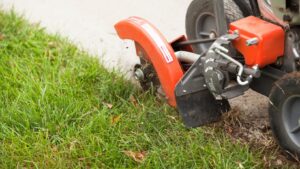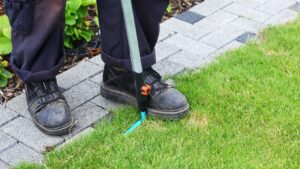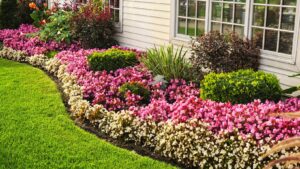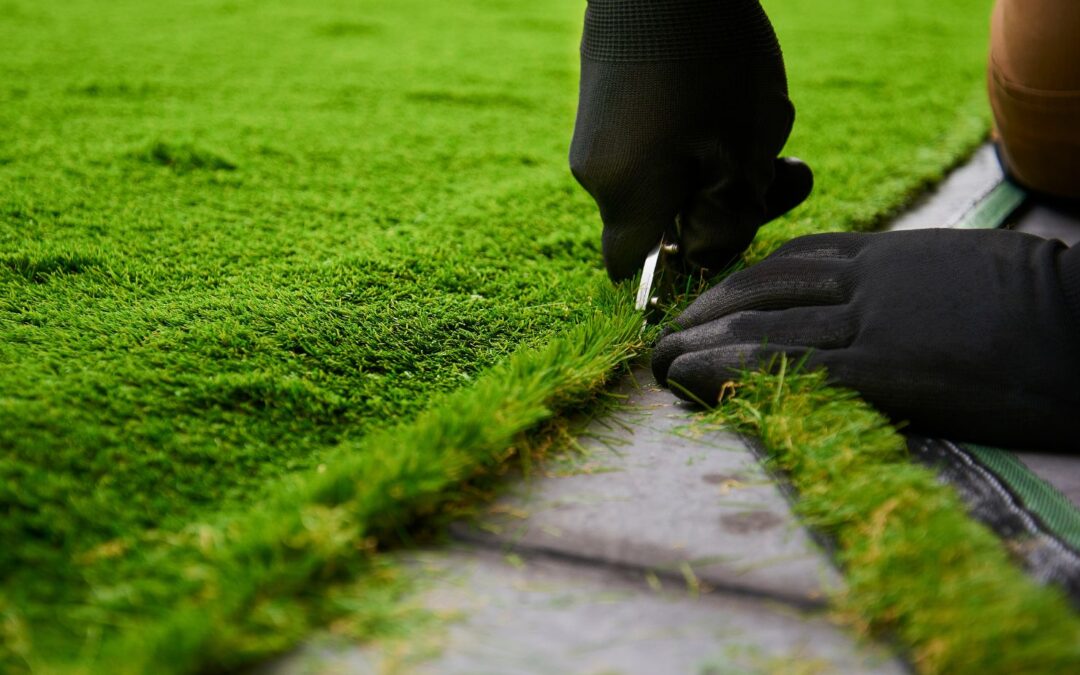Welcome to my corner of the internet! Here at gardenedgingexpert.com/blog, I’m excited to share my wealth of knowledge and expertise on all things garden edging. Whether you’re a seasoned pro or just starting out in your gardening journey, this blog is tailored with you in mind.
In this blog, I’ll delve into everything from basic edging techniques and materials to more complex landscape designs. You can expect honest product reviews, innovative DIY ideas, practical tips and tricks – basically anything that’s related to garden edging.
So why garden edging? Well, it’s not only about creating clean lines between your lawn and flower beds or pathways. It’s also about enhancing the overall aesthetics of your outdoor space while making gardening tasks more manageable. Stay tuned as we explore the amazing world of garden edging together!
Gardenedgingexpert.com/blog
Ever wondered why garden edging is becoming a trend? I’m here to shed some light on that. Firstly, let’s talk about aesthetics. Garden edging adds a sharp, clean line between your lawn and garden beds, creating an appealing visual contrast that can significantly enhance the overall beauty of your outdoor space.
But it’s not just about the looks. It also provides practical benefits like keeping grass from spreading into flower beds. Without proper borders, grass can easily invade and overwhelm your flowers or vegetables – a situation no gardener wants to encounter!
What’s more, garden edging could be quite beneficial for gardenedgingexpert.com/blog. It helps contain mulch within designated areas preventing it from washing away during heavy rainfalls. This means less work for you in maintaining the quality and health of your soil.
Moreover, by defining clear boundaries using garden edgings, you’re essentially simplifying maintenance tasks such as mowing or watering. With these edges in place, you’ll have better control over where to water or cut without damaging plants unintentionally.
Lastly but importantly too, did you know that gardenedgingexpert.com/blog can also deter pests? Yes indeed! Certain types of garden edges like those made from stone or metal can dissuade small critters from invading your plants.
To sum things up:
- Adds aesthetic appeal
- Keeps grass contained
- Aids in soil management
- Simplifies maintenance tasks
- Can deter pests
So there you have it – some solid reasons why investing time and resources into proper garden edging is worth considering!
Types of Edging Materials
When it comes to garden edging, there’s indeed a wide array of gardenedgingexpert.com/blog. Each one boasts its unique set of features and benefits, making the choice largely dependent on your specific gardening needs and aesthetic preferences.
First off, let’s talk about stone. It’s one of the most classic choices for garden edging. Offering both a natural and elegant look, stone can easily blend into any landscape design. Plus, it’s incredibly durable which means you won’t have to worry about replacing it anytime soon.
Next up is plastic. Now, I know what you’re thinking – “Plastic? Really?” But hear me out for a second. Plastic edging can be surprisingly versatile and cost-effective! It comes in an assortment of colors and styles to match whatever design you’ve got going on in your garden. Additionally, it’s lightweight which makes installation a breeze.
Then we have metal edges—usually made from steel or aluminum. This type is known for its durability and sleekness that gives your garden an organized yet stylish touch.
Last but not least is wood edging – the perfect choice for those who favor a rustic or country-themed garden design!
Here are some key points:
- Stone: Durable and naturally elegant
- Plastic: Versatile with easy installation
- Metal: Sleek-looking with high durability
- Wood: Ideal for rustic or country-themed gardens
Remember each material has its pros and cons so take into account your gardening style, climate conditions as well as budget before making up your mind!
How to Choose the Right Garden Edging for Your Landscape
Deciding on the perfect garden edging for your landscape isn’t as simple as picking out what catches your eye first. It’s a thoughtful process that needs some digging into (pun intended). Let me guide you through it.
First and foremost, consider the style of your landscape. Is it formal or casual? Modern or rustic? The type of edging you choose should complement this. For example, if you’ve got a modern landscape design, sleek metal or concrete edgings might be a good fit. On the other hand, a rustic cottage garden would pair well with charming wooden or stone edgings.
Next up, think about functionality. What do you need your edging to do? If it’s to keep aggressive plants from invading certain areas, sturdy materials like brick or stone are recommended. But if it’s more about aesthetics than function, softer materials like wood could work just fine.
Don’t forget to factor in maintenance too! Some materials require more upkeep than others. Wood may rot over time and needs regular sealing while metal and plastic options are pretty much maintenance-free.
Your budget also plays an essential role in choosing garden edging material. Options range from inexpensive plastic strips to pricier natural stones and everything in between! You’ll want to find something that fits within your budget but still meets all your requirements.
Lastly, ponder the installation process involved with each material type. Some types of edging require professional installation which can add significantly to their cost while others are easy DIY projects that even novice gardeners can handle!
 In summary:
In summary:
- Match the style of your landscape
- Consider what function(s) the edging needs to fulfill
- Think about how much maintenance you’re willing and able to perform
- Keep an eye on costs: both initial purchase price and potential installation fees
- Can you install it yourself? Or will professional help be needed?
Choosing the right garden edging for your landscape might take a bit of time and research, but it’ll be worth it. After all, the right edging can make or break your garden design!
DIY Garden Edging Ideas
Let me tell you, there’s something special about a well-defined garden. Not only does it make your yard look neat and polished, but it also brings a sense of order to your outdoor space. And guess what? This landscaping magic trick isn’t as difficult to pull off as you might think. With some creativity and a dash of elbow grease, you can create DIY garden edgings that’ll be the envy of your neighbors!
Firstly, let’s talk about using stones or rocks for garden edging. It’s pretty much Mother Nature’s gift to the gardener! They are natural, rugged and come in varied shapes and sizes – perfect for adding a rustic charm to your backyard. You can stack them up in an irregular fashion or line them neatly around flower beds; either way they’re sure to make quite the statement.
Bricks offer another fantastic option for DIY garden edging. Whether you’ve got some leftover from a building project or scored them from a salvage yard, bricks bring sturdiness and classic appeal like no other material. You can lay them flat in a straight line for a traditional look or position them at an angle for something more dynamic.
Recycled materials such as glass bottles can also be used effectively for garden edging. Surprised? Well don’t be! When pushed bottom-down into the ground along the border of flower beds or walkways, these bottles catch sunlight in unique ways making your garden sparkle with unexpected color.
Another idea that I love is using wooden logs as garden edges. Especially if you’re aiming for that woodland vibe! Their earthy tones blend seamlessly with greenery while their natural textures add depth to any landscape design.
Lastly on my list would be seashells – yes you heard it right – seashells! If coastal chic is what you’re after then this one’s definitely worth trying out.
Remember folks, creativity knows no bounds when it comes to DIY garden edging. All you need is a little imagination, some time on your hands, and you’re all set to transform your backyard into an outdoor oasis!
Professional Garden Edging Services
Let’s delve into the world of professional garden edging services. It’s a game-changer for those who take their landscaping seriously. With expert guidance, your outdoor space can transform from ordinary to extraordinary in no time.
Why hire a professional, you may ask? Well, it’s simple – they’re equipped with the right skills and tools to get the job done efficiently. While it’s possible to DIY your garden edging, nothing beats the precision and craftsmanship of a professional.
Consider this: professionals have years of hands-on experience and training under their belt. They know just what techniques work best for different types of gardens and soil conditions. From flower beds to vegetable patches, they’re adept at creating clear divisions that enhance your garden layout.
Moreover, hiring a pro means saving time and avoiding potential mishaps. Imagine spending hours on end trying to perfect your lawn edges only for them to end up crooked or uneven! That won’t be an issue with a professional service – they’ll ensure each curve is crisp and every line is straight.
Here’s another perk: many professional services offer customized solutions tailored specifically for your garden needs. You’ll have input on materials used – whether it’s brick, stone or metal edgings – as well as overall design elements.
In conclusion, entrusting your garden edging tasks to professionals not only guarantees top-notch results but also frees up your valuable time so you can enjoy more of what you love doing in your beautiful yard.
What You Need To Know About Garden Edging
As we wrap up this informative journey through the world of garden edging, I can’t help but feel a sense of accomplishment. We’ve covered a lot of ground and dug deep into some key aspects that make or break any garden edging project.
Let’s take a brief look at what we’ve learned:
- The importance of choosing the right materials for your garden edges. From metal to wood, stone to plastic, each has its own unique characteristics.
- The art of installing garden edging correctly. It’s not just about placing materials next to your plants; it involves careful planning, preparation and execution.
- The impact of good maintenance on the longevity and aesthetics of your garden edges.
If you’re thinking about giving your outdoor space a makeover, remember that successful garden edging is more than just separating grass from flower beds – it’s an artistic expression that enhances the overall appeal of your landscape design.
Now that all said and done, I hope you found value in my insights and tips shared on gardenedgingexpert.com/blog. Remember these guidelines as they’ll serve as solid stepping-stones towards achieving those eye-catching borders you’ve always dreamed about having in your yard.
Lastly on my list would be seashells – yes you heard it right – seashells! If coastal chic is what you’re after then this one’s definitely worth trying out.
Remember folks, creativity knows no bounds when it comes to DIY garden edging. All you need is a little imagination, some time on your hands, and you’re all set to transform your backyard into an outdoor oasis!
I’m confident with these nuggets of wisdom under your belt; you’ll soon be on your way to becoming a true expert in the realm of garden edging! Happy gardening!
My name is Andrea Thompson and I’m a home based freelance writer. I’m 23 years old, married to my best friend, and mother to a wonderfully independent and opinionated 3 year old girl and step-mother to a sweet seven year old boy. I live in a tiny, little town in Kentucky, where I spend my free time fishing with my kids.
Writing has always been my passion, which I followed through high school, and for a while in college. Life happened, and once I discovered we were pregnant, I switched directions; opting for the healthcare industry because of the stability.
Finally, years later, I was in a place where I could leave the day job that never truly made me happy, and pursue my dreams. I’ve built, and am still building, my writing career from scratch. But, I’m passionate and I’m good at what I do. And, in the end, I can prove to my daughter that she can do anything she wants with this life.





